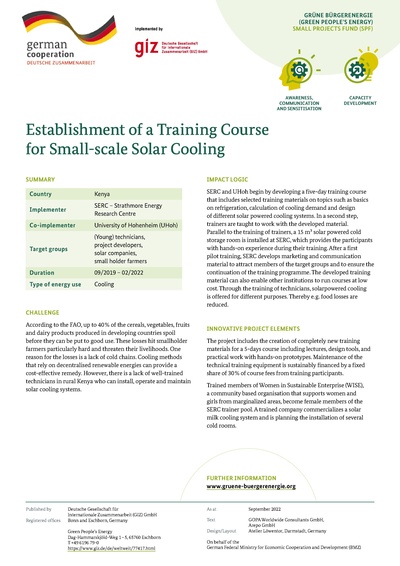Knowledge fuels change
For over a decade, Energypedia has shared free, reliable energy expertise with the world.
We’re now facing a serious funding gap.
Help keep this platform alive — your donation, big or small, truly matters!
Thank you for your support
Difference between revisions of "Domestic Biogas to Improve Rural Livelihood in Ethiopia"
***** (***** | *****) |
***** (***** | *****) |
||
| Line 15: | Line 15: | ||
|GBE FS source Wiki=GBE-SPF_Hawassa University_Projectfactsheet.pdf | |GBE FS source Wiki=GBE-SPF_Hawassa University_Projectfactsheet.pdf | ||
}} | }} | ||
| − | {{GBE Project Documents | + | {{GBE Project Documents}} |
| − | |||
| − | |||
| − | }} | ||
Revision as of 13:58, 24 August 2023
Domestic Biogas to Improve Rural Livelihood in Ethiopia
Key Data
Currently, the university is implementing 51 projects. The two project districts belong to the SNNPR. In order to spread the use of biogas plants as much as possible, the project informs the people in the district comprehensively about the advantages and prerequisites of biogas plants. This is important because under this project, interested people have to pay 10% - 20% of the costs of the plant themselves, depending on their financial circumstances. In the second step, the project trains designers who learn how biogas can be produced and used, and how to construct and complete a biogas plant. The know-how acquired is to be used to improve the employment opportunities of the participants or to enable them to become self-employed. The project aims to build up to 100 domestic biogas plants and train about 50 local micro-entrepreneurs to build and distribute these plants. Thus, apart from clean energy, the project also promotes employment possibilities. So far biogas has been underutilized in Ethiopia.
The project not only expands domestic biogas usage to two new districts, but also includes elements on capacity building.The project enables local farmers to become more resilient to energy shortages and set up their own energy production. This way local farmers are able to expand the national biogas system and further sustainable energy approaches like bio gas on their own. For the project two different sizes of biogas plants (8 m3 and 6 m3) are used, depending on household specific livestock holding and dung supply.- Community-based Approaches
Location




















